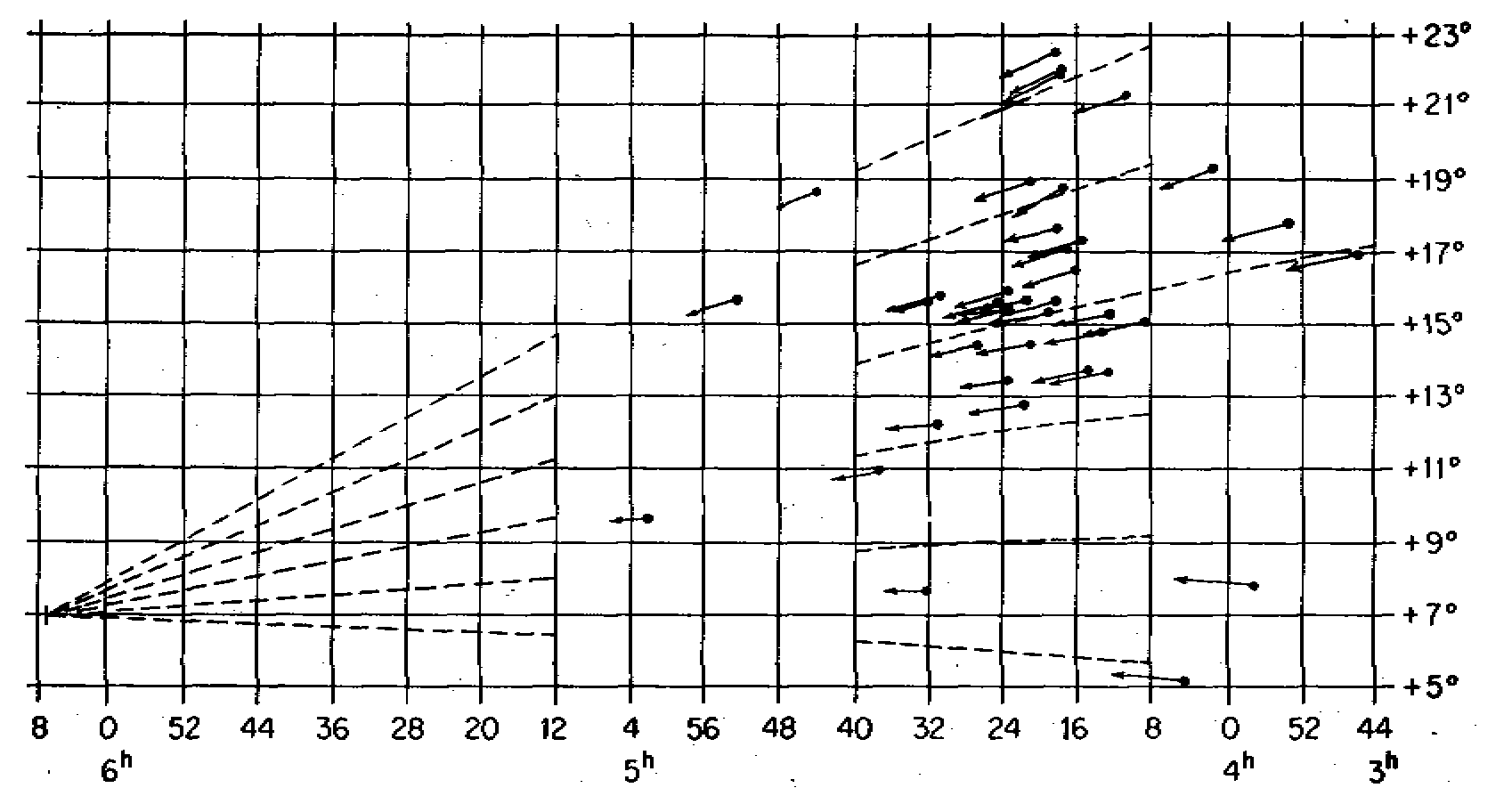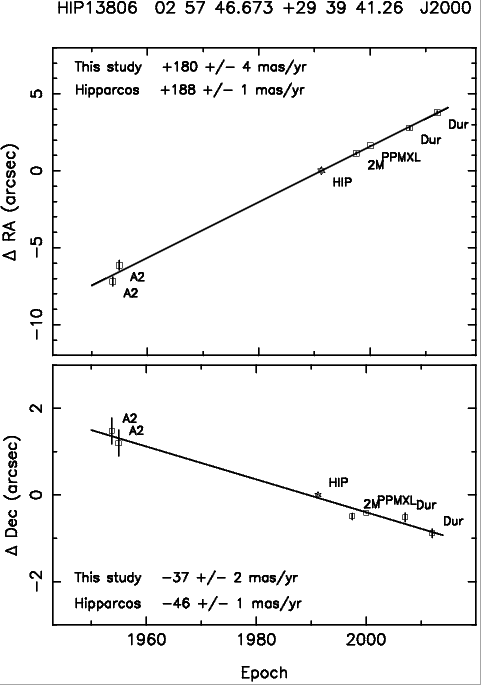 |
Department of Physics | AstroLab |
Distance to the Hyades via Moving-Cluster Parallax
The Hyades is an open cluster of about 100 stars in the constellation of Taurus. The cluster members share a common space motion. As seen from the Earth, the paths of the stars converge towards a point in space. This geometry can be used to estimate the distance to the cluster, i.e. the moving-cluster parallax. On average, the Hyades stars have a proper motion of 0.12 arcsec per year and a radial velocity of +40 km/s. The main core of the cluster lies 33° from the convergent point.

The proper motions (arrows) of stars in the Hyades converge to a point
as the cluster streams pass the Sun. If ![]() is the angle from the cluster
centre to the convergent point, VR
the average cluster radial velocity in kms-1 and
is the angle from the cluster
centre to the convergent point, VR
the average cluster radial velocity in kms-1 and
![]() the average proper motion in arcsecs yr-1,
then the cluster distance, d, in parsecs, is given by
the average proper motion in arcsecs yr-1,
then the cluster distance, d, in parsecs, is given by
![]()
The aim of the project is to determine proper motions for a set of Hyades members; about ~80. By determining the location of the convergent point and the mean cluster proper motion, and combining these with published radial velocity measurements, the cluster distance can be estimated by simple geometry.
The proper motion measurements are made from CCD images. Accurate positions of Hyades members are measured relative to those of the fainter and more distant stars. By comparing these positions with those measured from old digitised photographs individual proper motions can be derived. The limited dynamic range of the old photographs restricts the sample to the fainter members of Hyades.
The diagram below illustrates the measurement of the proper motion of the star HIP13806.

In your analysis don't forget there are two subtleties in the RA/Dec co-ordinate system. First, for historical reasons, RA is measured in units of time (hours, minutes, seconds) while Dec is measured in the usual units of angular measurement (degrees, minutes, seconds), i.e. Arcturus' position is RA: 14 hours 15 minutes 34.5 seconds and Dec: 19 degrees 11 minutes 31 seconds. Note that one second of RA (a second of time) is a much larger unit than one second of Dec (an arcsecond). Secondly the conversion of RA in units of "seconds of time" to "arcseconds" needs a cos(Dec) term, i.e.
RA difference [arcsecond] = RA difference [seconds of time] × 15 × cos(Dec)
Project Notes Project References
| Back to the AstroLab Home Page | jrl | 2020-Jun-17 13:36:20 UTC |